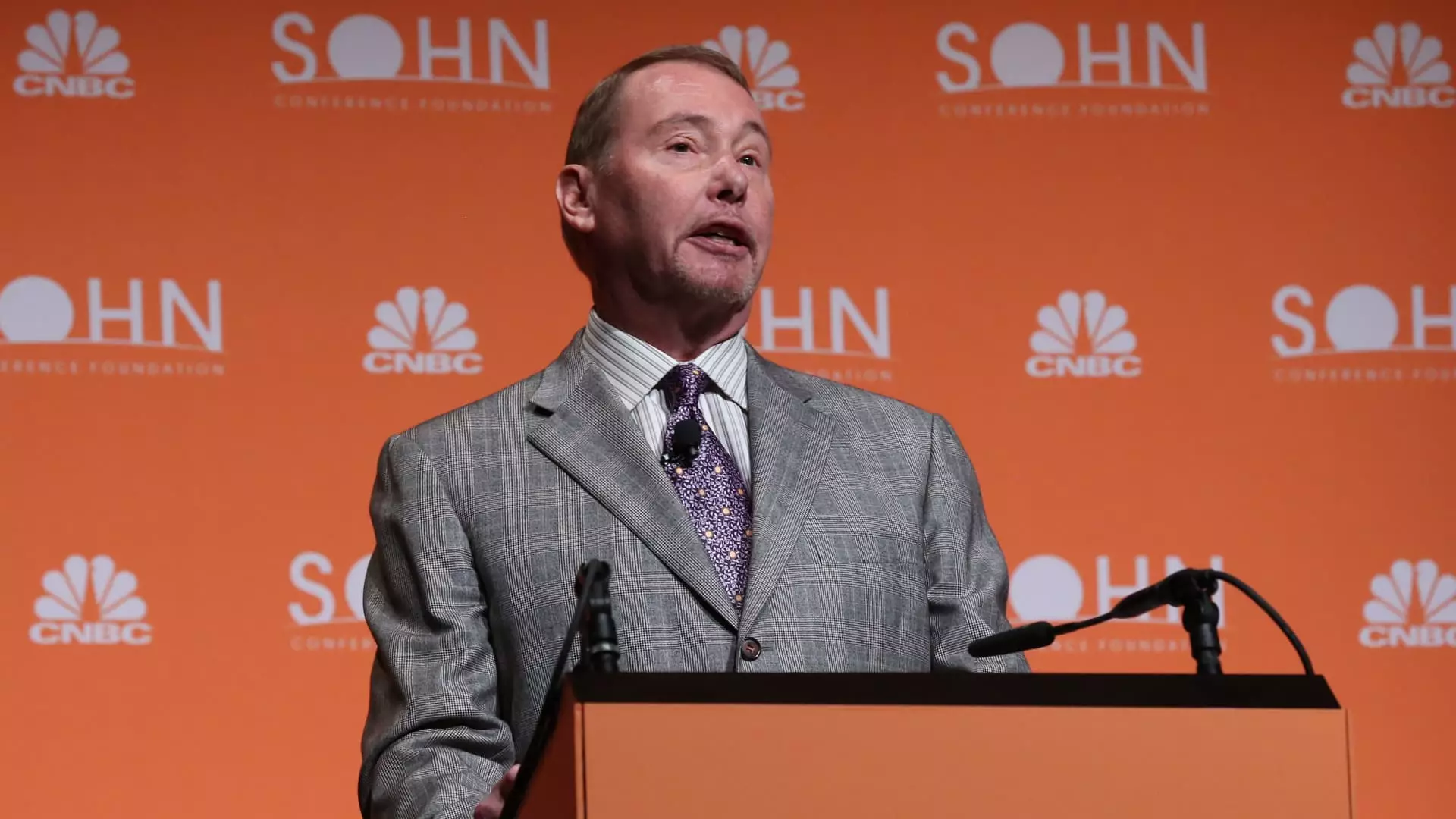The intricate relationship between governmental control and economic policy has long been a topic of debate among financial experts. Recently, Jeffrey Gundlach, CEO of DoubleLine Capital, highlighted the potential ramifications that a Republican majority could have on interest rates and fiscal spending. His analysis emphasizes how political landscapes can influence critical economic indicators, particularly during times of uncertainty such as the current fiscal climate.
Gundlach suggests that if the Republicans secure control of the House of Representatives, it is likely to lead to an explosion of government spending. Such a scenario would grant President-elect Donald Trump the discretion to pursue aggressive fiscal policies without the constraints typically posed by a divided government. This prospect raises concerns about the necessity for increased borrowing, particularly through Treasury issuance, which would inevitably lead to higher bond yields. The dictate from financial experts like Gundlach is clear: an unfettered government footing the bill for broad spending initiatives will likely result in a significant shift in interest rates.
Gundlach articulated this by stating that the subsequent debates around fiscal responsibility would not just affect economic rhetoric but would also have tangible consequences on the market. “There’s going to be a lot of debt,” he pointed out, illustrating how increased borrowing is practically a foregone conclusion under these circumstances.
The Federal Reserve’s Evolving Role
In the context of these predictions, it’s vital to consider how the Federal Reserve may respond to rising fiscal pressures. With the recent rate cuts, and potential future cuts anticipated, the Fed’s mechanisms may come under scrutiny. The backdrop of a budget deficit exceeding $1.8 trillion heightens the stakes of any response from the central bank. In navigating the delicate balance between stimulating an economy and controlling inflation, the Fed may face mounting pressure to adapt its strategies in reaction to a more aggressively funded government.
Gundlach’s foresight on the need for such adjustments showcases the interconnectedness of government fiscal policy and central bank strategies. The concern is not just about whether interest rates may rise but also how the anticipation of governmental financial policies will determine market sentiments moving forward.
Interestingly, despite his apprehensions regarding rising debt, Gundlach posits that a Trump administration may paradoxically lower the likelihood of a near-term recession. This view is rooted in the belief that the robust fiscal agenda proposed by Trump would stimulate growth, albeit at the potential cost of escalating the national debt. The idea of cutting taxes and enhancing fiscal stimulus is strongly tied to economic expansion, but crucially, it also complicates the fiscal landscape.
His remarks suggest that while political consolidation may foster short-term economic growth, it raises long-term sustainability questions that investors must grapple with. Will the additional debt incurred by expansive fiscal policies yield proportional growth, or does it merely set the stage for a future economic reckoning?
While Gundlach’s analysis paints a potentially positive picture for short-term economic activity under a solidly Republican government, it simultaneously raises alarm over long-term fiscal responsibilities. The conversation surrounding interest rates and spending is complex and multifaceted, requiring stakeholders from all corners of the financial world to consider both the immediate benefits and future repercussions of political decisions. As history has shown, the intersections of politics, fiscal policy, and economic conditions produce outcomes that can be both beneficial and treacherous, necessitating keen scrutiny and preparation for what lies ahead.

